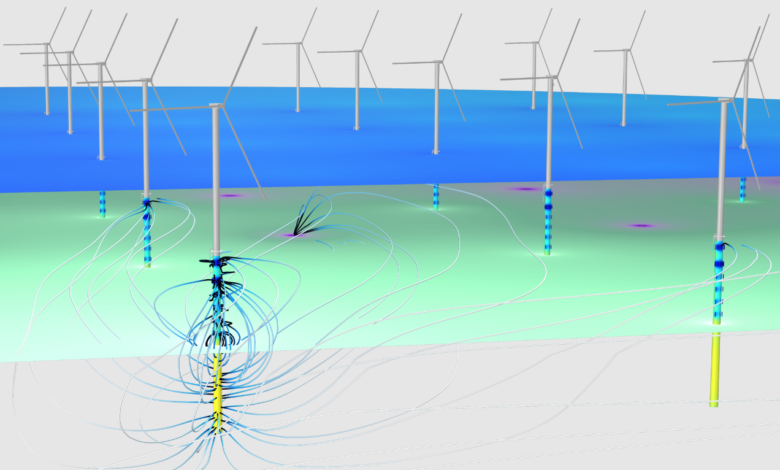New solutions for clean energy thanks to multiphysics simulation

Among the objectives of the European Union in the field of environment, energy and climate is the reduction of greenhouse gas emissions by at least 55% compared to 1990. To achieve this goal, the spread of renewable energies must accelerate.
Italy is also committed to continuing along this path and is witnessing undeniable growth: in 2023 the contribution of renewable sources to the electricity mix was 36.8% and the growth of electricity production from renewable sources increased by 26,3% compared to the previous year, with particular growth of hydroelectric (+40.2%), wind (+42.1%) and photovoltaic (+41.1%). *
Challenges for an increasingly green energy
To grow more and more and focus resolutely on objectives, researchers and engineers continue to work to improve the efficiency of existing technologies and develop new innovative solutions for the production of clean energy. From solar to wind energy, from tidal power to hydrogen technologies, it will be necessary to further improve the practicality, economic sustainability and accessibility of green energy solutions.
It is a path full of challenges, on several levels. Wind turbines, for example, need to be protected from lightning, and their maintenance can be challenging and costly, so the components must have a long lifespan. In addition, many renewable energy sources, such as solar energy, are available intermittently, which requires the development of new battery technology. The creation of new technologies also involves a careful assessment of their environmental impact, to avoid creating new problems.
The key role of multiphysics simulation
When engineers and scientists face these challenges, multiphysics simulation is a great ally. A multiphysics simulation software can be of great help, for example, to improve the storage of renewable electricity, thanks to the modeling of devices such as electrolysers and batteries. Another important aspect is the thermal management of devices and systems: in this field, multiphysics modeling allows to integrate in the design of a product the analysis of temperature changes, which may, for example, affect the chemical performance of batteries or damage electronic components. Modeling of fluid-structure interaction and solar radiation are also central to the renewable energy sector.
In general, thanks to modeling it is possible to evaluate and test each project in a virtual environment and optimize it to achieve specific objectives, both in the field of production and green energy storage.
An ebook dedicated to simulation for clean energy
To tell how this is possible, COMSOL has published a free ebook, which collects six concrete cases in which simulation has contributed to technological progress in the field of clean energy: we talk about hydraulic turbines, fuel cells, high voltage cables, wind farms and more.
In all of these stories, engineers and scientists have leveraged multiphysics simulation to bring their most innovative projects to life, each of which has contributed to the path to clean energy solutions and a greener future.
Download the free ebook: https:///www.comsol.it/c/fpor





